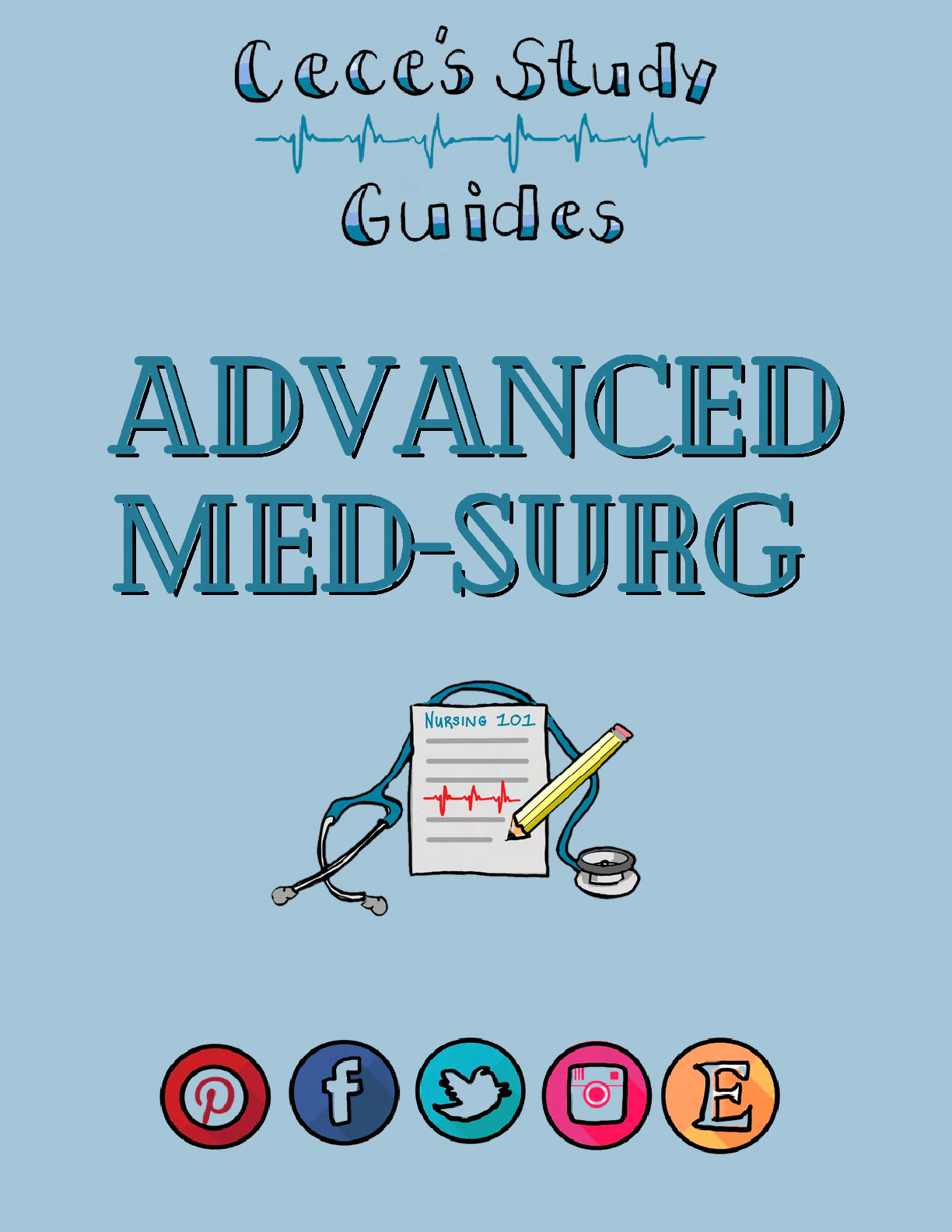*NURSING > STUDY GUIDE > MATERNAL A 327Exam 1 study guide complete( well verified to enhance excellence) ( enhances Exam 1 re (All)
MATERNAL A 327Exam 1 study guide complete( well verified to enhance excellence) ( enhances Exam 1 revision since you are well guided)
Document Content and Description Below
Maternity Exam 1 1) Different roles of OB providers (nurses, midwives, doulas, OB): Nurse midwife: RN who have completed extensive studies. They provide complete care during pregnancies, spend ... time counseling and supporting the family and providing examinations, counseling and information. They provide information to prevent problems during pregnancy and to facilitate normal pregnancy and childbirth. NP’s: assist in high risk pregnancies, provide services such as preventative, holistic. Perform examinations, order and interpret lab results. Doula: They help the woman with physical support such as relaxation and massage and provide emotional support and advocacy throughout labor. 2) Government involvement in maternal-infant care: High rates of maternal and infant mortality among poor woman provided the impetus for federal involvement in maternity care. The federal government supports several programs to improve the health of mothers, infants and young children. With DRG, if the cost is more than expected the facility will absorb the cost. High rates of maternal and infant mortality, rising insurance cost, unemployment rate, expensive or unavailable work related coverage and part time jobs. 3) Family centered care: it describes a safe, high quality care that recognizes and adapts to both the physical and psychosocial needs of the family and newborn. Some principles include that birth is a healthy event in a family, it affects the whole family, the family is capable of making decisions about care if they are given adequate information. Nurses are responsible for teaching, counseling and supporting families in their decisions about childbirth. 4) Examples of complementary and alternative medication: Alternatives are used alone, while complementary therapy is used in addition to medical therapy. These therapies may aid with back or neck pain, arthritis, joint pain, chest cold, depression, anxiety, upset stomach, insomnia, migraines. Some exampes of CAM and alternatives are yoga, taichi, music therapy, biofeedback, meditation, massages, herbals (gingko, ginseng, Echinacea, green tea, aoloe vera) However there are also dangers when taken with medication or excess (infertitilty, dysmenorrhea, lactation discomfort, premenstrual syndrome). 5) Cultural communication style: May be a source of conflict between “dominant culture and other culture” Southeast Asians: speak softly and avoid eye contact (considered rude). Seldom say no, but not do. They accept the prescription or medication but not take the medicine or agree to undergo procedure. Hispanic: education is a factor in Hispanics, 2/5 have no graduated from high school. Men serve as household head, woman are homemakers. Like “small talk”, may be insulted if you go straight to the point. Also belief in folk healer, curandero. African Americans: head of household tend to be woman, have sense of loyalty to their people and community. May use idioms, colloguial expressions or speech patterns that are unfamiliar to caregivers. Ministers are influential. Part of close extended family. Native americans: have close family relationships, and respect their elders. Consider health as a state of harmony with nature and believe that supernatural influences have a great impact on health and illness. Use herbs and rituals. Believe in a medicine man. Maternity Exam 1 Middle eastern: include Syria, Arabia, Egypt, turkey, Iran , Iraq. Personal information is only shared with personal friends, health assessment must be done in a gradual manner. Male is the head of household and makes decisions. Islam believe in praying 5x/day. Muslims do not eat pork or drink alcohol. 6) Differences in role for advanced preparation for maternal-newborn and woman’s health nurses: CNM: RN who have completed extensive studies. They provide complete care during pregnancies, spend time counseling and supporting the family and providing examinations (WWE), counseling and information. They provide information to prevent problems during pregnancy and to facilitate normal pregnancy and childbirth. NP’s: NNP assist in high risk pregnancies, provide services such as preventative, holistic. Perform examinations, order, interpret lab results and prescribe medications. FNP may assist in noncomplicated pregnancies. Clinical nurse specialist: include direct care, consultation, systems leadership, collaboration, coaching , research and ethical decision making. Unlike NP, CNS do not provide primary care. 7) Understand the importance of seeking early prenatal care during pregnancy: The earlier the woman seeks medical attention during her pregnancy, the less the chances of mortality rate in the newborn, and deformities. It is important to provide education and information to the parents or mother. And provide effective communication techniques. 8) Therapeutic communication (qualities/techniques): Therapeutic communication is purposeful, goal directed and focused. It involves responding and listening. Techniques include clarifying, reflecting, maintaining silence, questioning and directing. Clarifying: “im confused about your plans, could you explain?” Paraphrasing: Patient: “My boyfriend won't even come into the room for the birth. I'm furious with him.” Nurse: “You seem to be angry because he won't be here. Reflecting: Patient: I don’t know what to do. My husband doesn’t think a cesarean is needed, but the dr says the baby is showing some stress. RN: ‘you’re confused and frightened because they don’t agree?’ Structuring: creates guideless or setting priorities. Pinpointing: calling attention to differences or inconsistencies in statement. Directing: using nonverbal responses to encourage the person to continue. Summarizing: reviewing the main themes or issues that were discussed. 9) Focused assessment: used to father information related to the actual health problem. Often performed at the beginning of a shift and centers on area relevant to childbearing, newborn or womans health nursing. For instance after birth, the nurse should assess the breast and nipples because the mother is at risk for problems if she does not have adequate information about breastfeeding or care of nipples. And it will reveal strengths that nursing care will enhance 10) Ethical theories Maternity Exam 1 Deontological: determines what is right by applying ethical principles and moral rules. It does not vary the solution according to situation. Utilitarian model: Approaches ethical dilemmas by analyzing the benefits and burden of any action to find one that will result in the greatest amount of good. If the outcome is positive the method of arriving at that outcome is less important. 11) Ethical issues in reproduction: It involves conflicts in which a woman behaves in a way that may cause harm to her fetus or that is disliked by some or most members of society. It occurs when the mothers needs, behaviors or wishes may injure the fetus. For example abortion, substance abuse and a mothers refusal to follow the advice of caregivers. The supreme court did not rule on when life begins. Some believe abortion is wrong if the woman is concepted, others when the fetus is viable (20 weeks), other believe the mother is the decision maker, while others believe it is illegal to take a fetus life. 12) Documentation: Documentation must be specified and complete correctly because of the long statue of limitations when a newborn is involved. And when years pass it is unlikely the nurse will remember situations that happened in the past. If they ever become sued, their documentation is what may save them. It must show that nurses assessed the patient appropriately, continually monitored for problems, identified problems and instituted correct interventions, and reported any conditions to the MD. 13) Principles of negligence: Negligence is the failure to perform, as a reasonable, prudent person of similar background would act in a similar situation. Negligence may consist of doing something that should not be done or failing to do something that should be done. 14) Female reproductive anatomy: Hormones: Hypothalamus makes GnRH, then GnRH makes LH and FSH in the anterior pituitary Maternity Exam 1 LH makes progesterone FSH makes graafian follicle, then that makes estrogen Estrogen + progesterone cause shedding of the ovaries causing a period. 15) Ovarian cycle: Follicular (1st-14days) , Ovulatory (14th day), Luteal (12th day after ovulation) Follicular phase: period during the ovum matures. Begins with the first day of menstruation and ends about 14 days later in a 28 day cycle. And the follicles begin to mature. Ovulatory phase: the mature follicle is a mass of cells with a fluid filled chamber. A smaller mass of cells houses the ovum within this chamber. At ovulation a blisterlike projection called stigma forms on the wall of the follicle, the follicle ruptures and the ovum with its [Show More]
Last updated: 1 year ago
Preview 1 out of 31 pages
.png)
Reviews( 0 )
Document information
Connected school, study & course
About the document
Uploaded On
Jun 01, 2021
Number of pages
31
Written in
Additional information
This document has been written for:
Uploaded
Jun 01, 2021
Downloads
0
Views
34


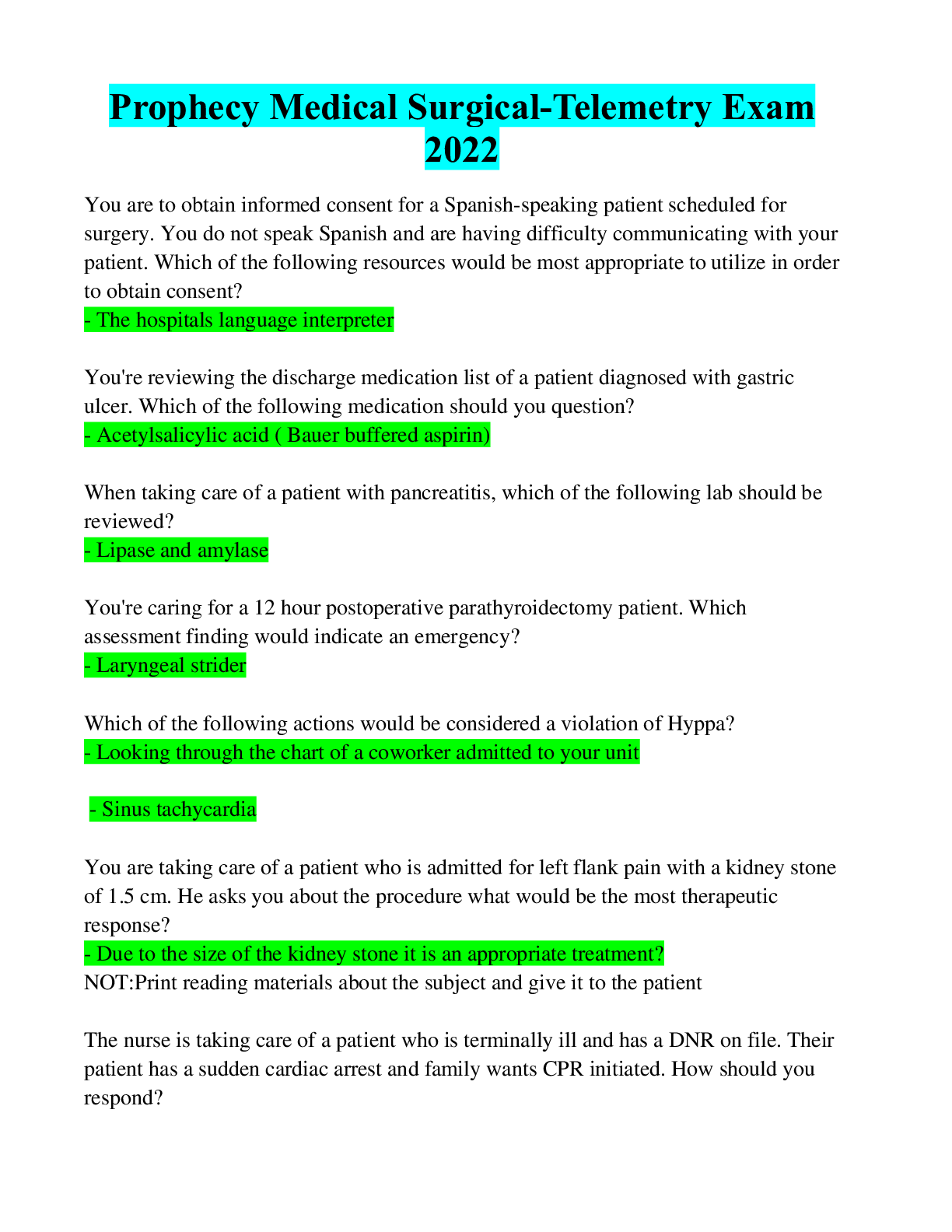
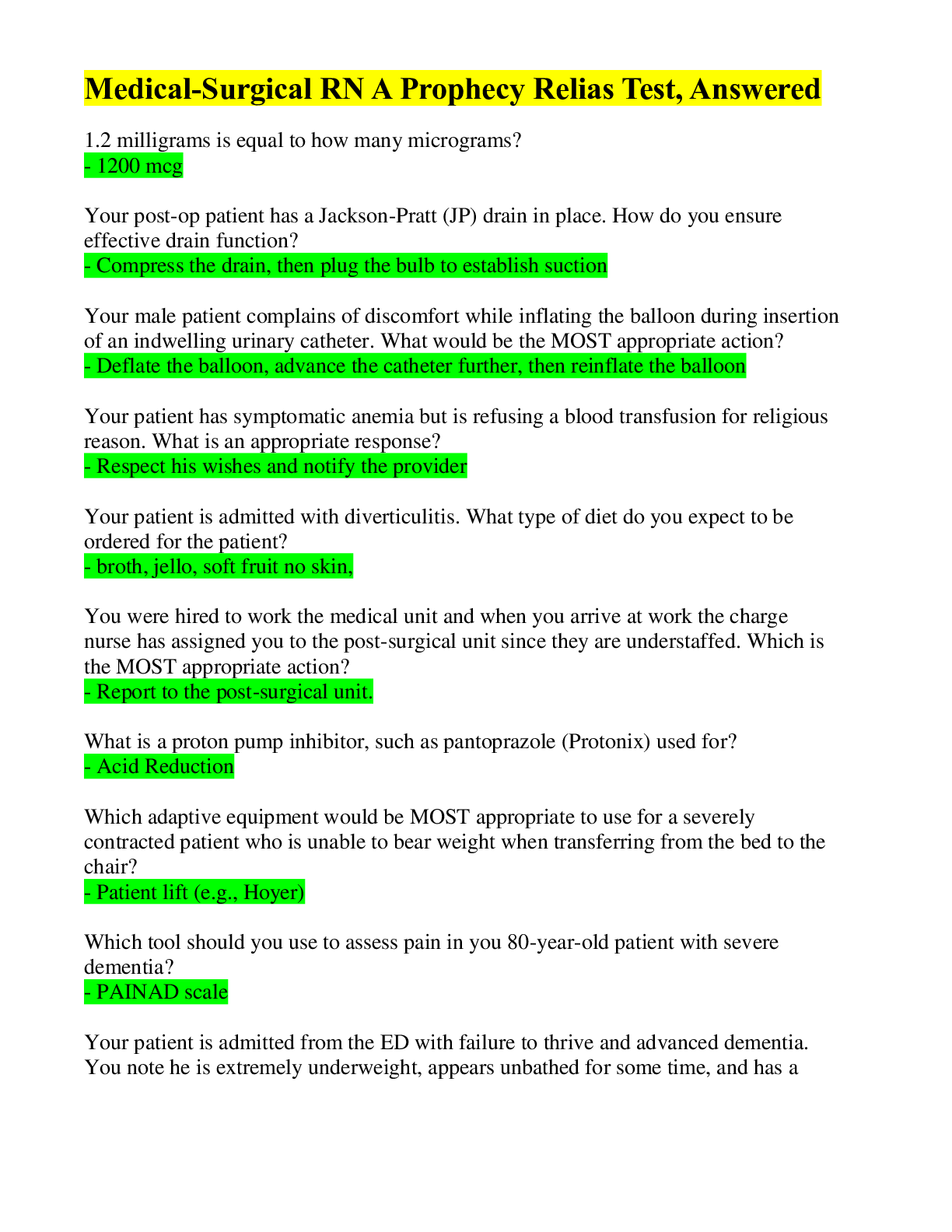
.png)

.png)
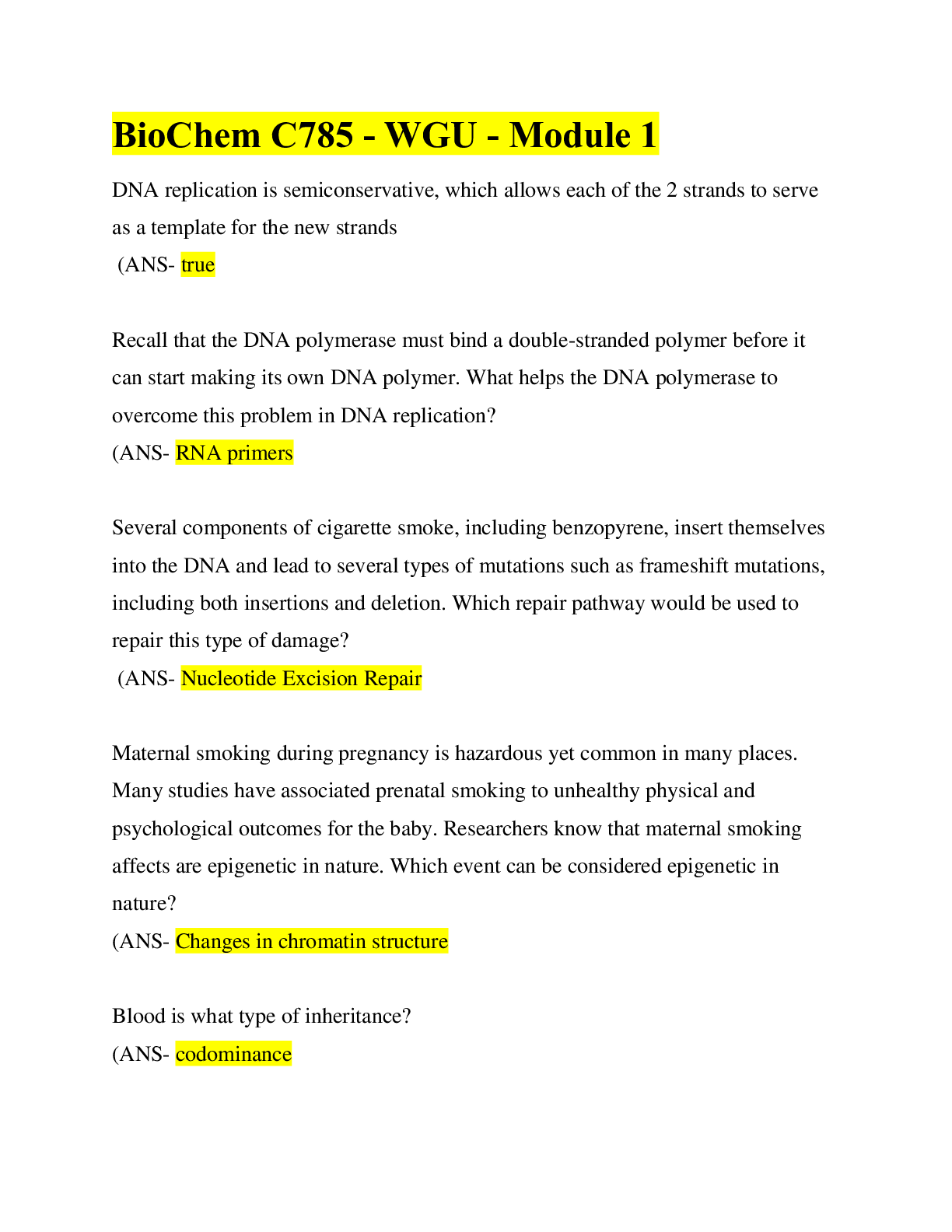

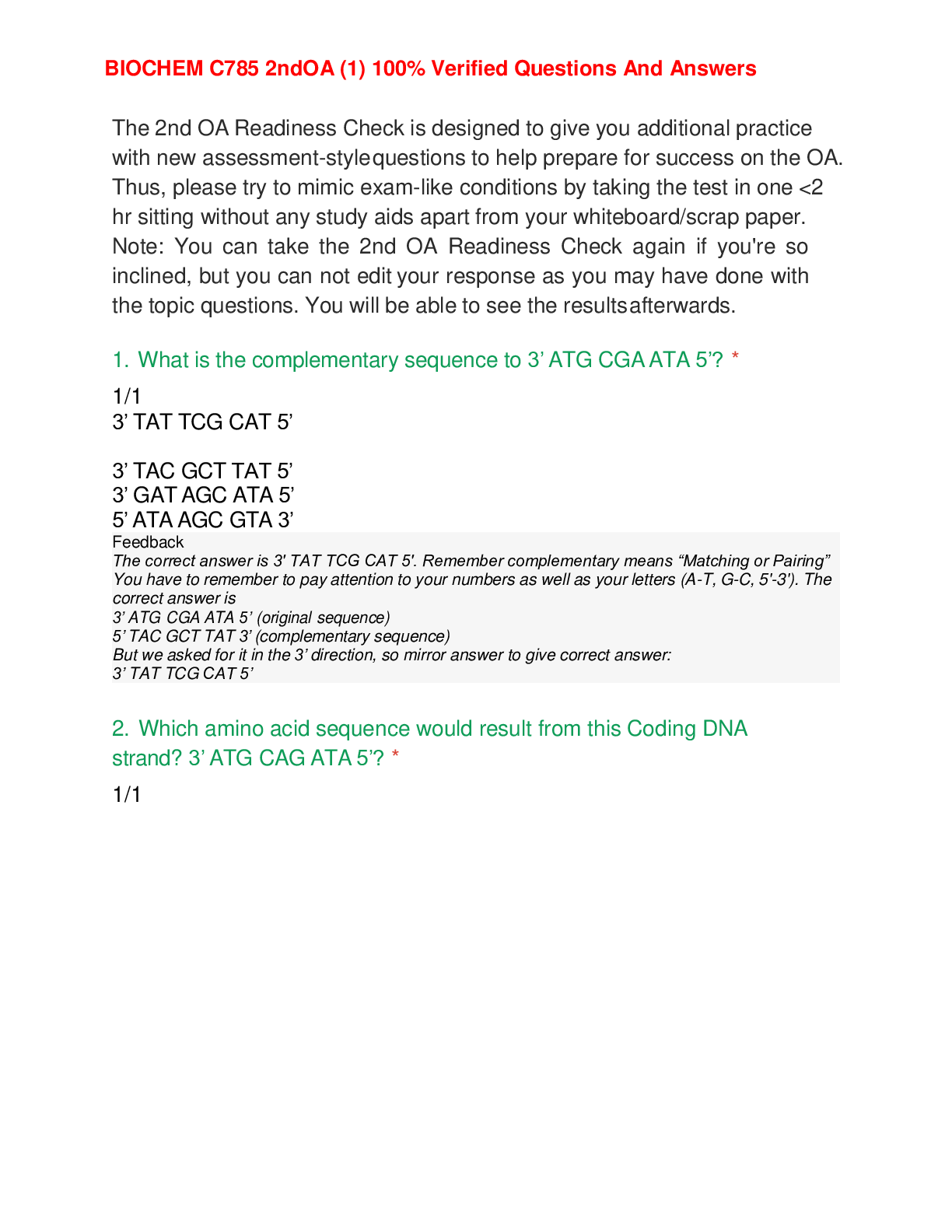

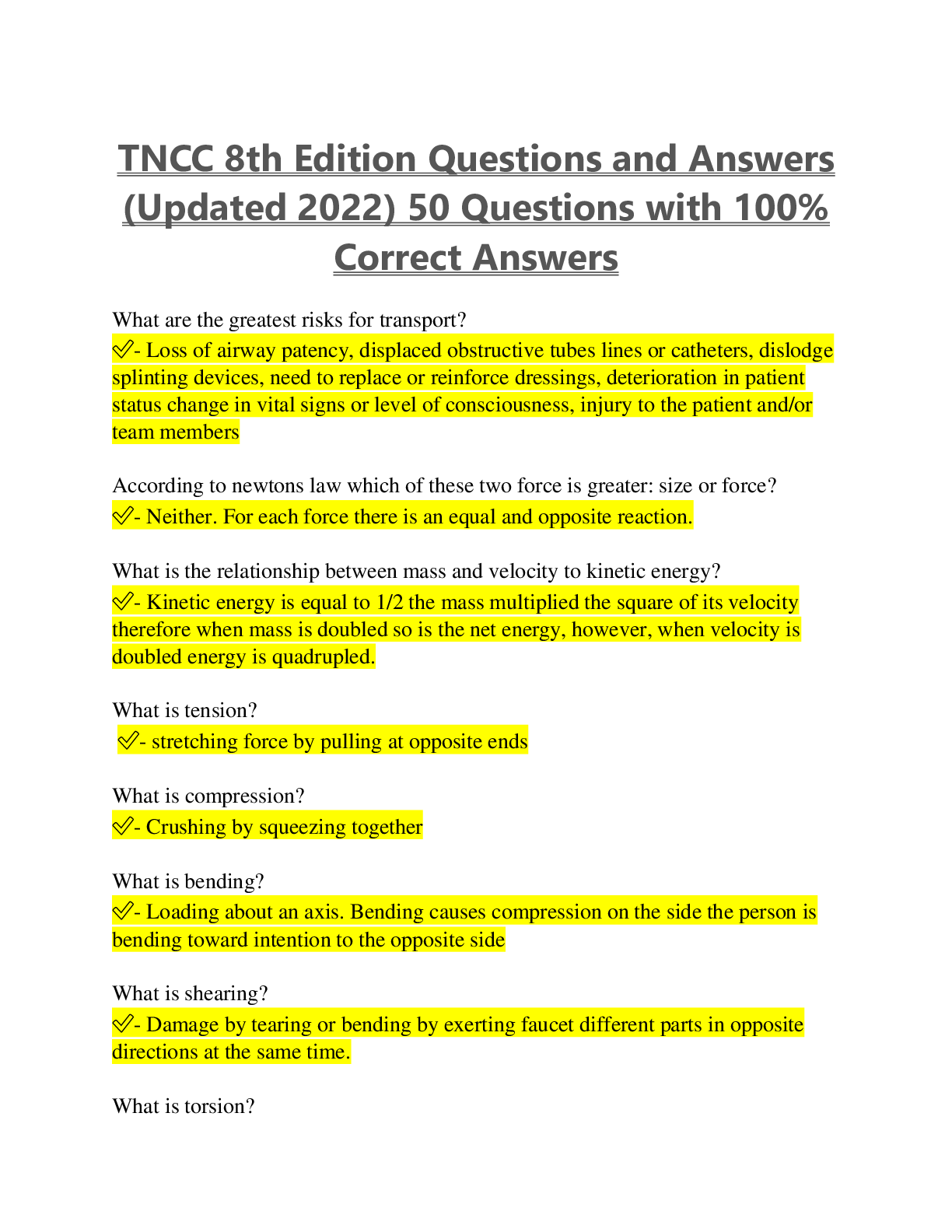
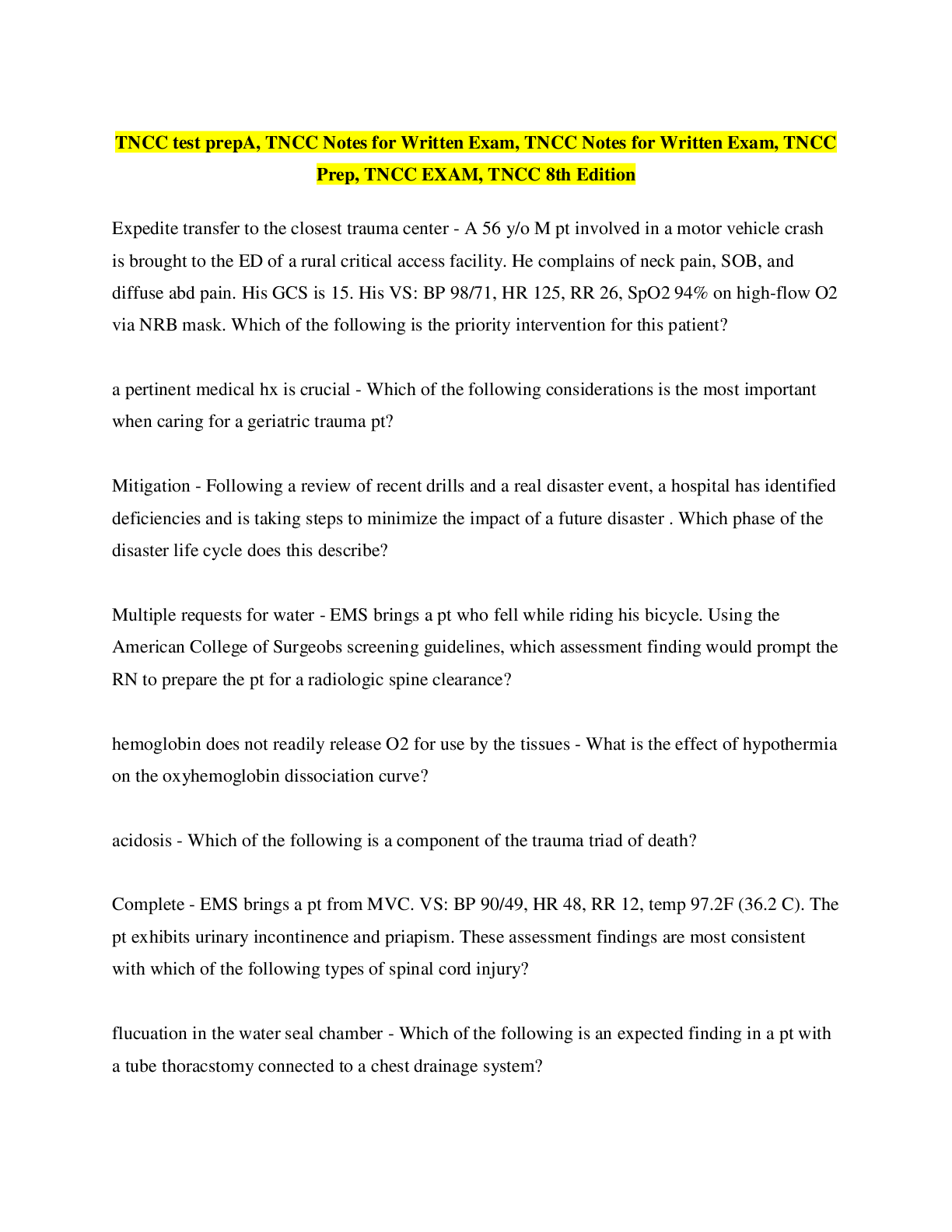
.png)
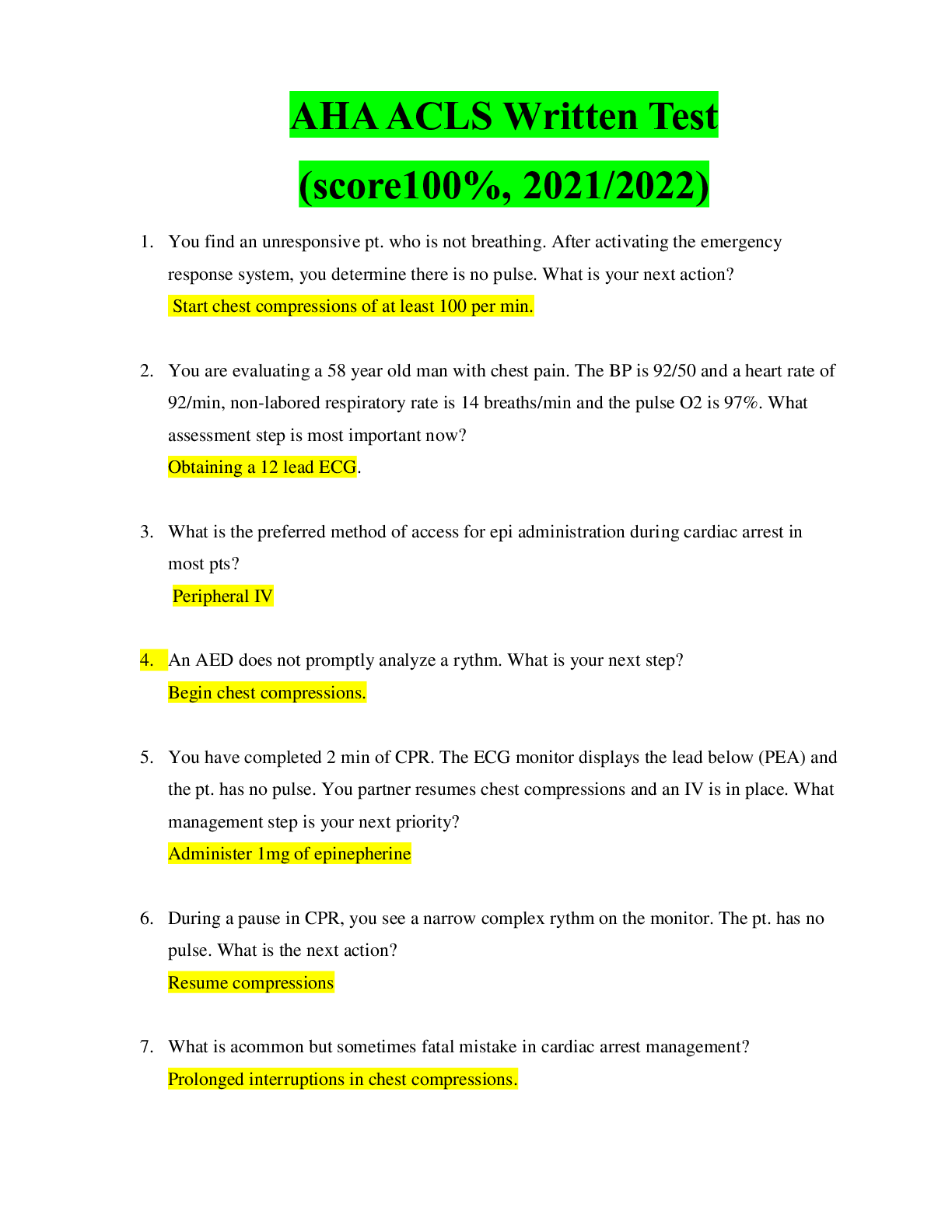
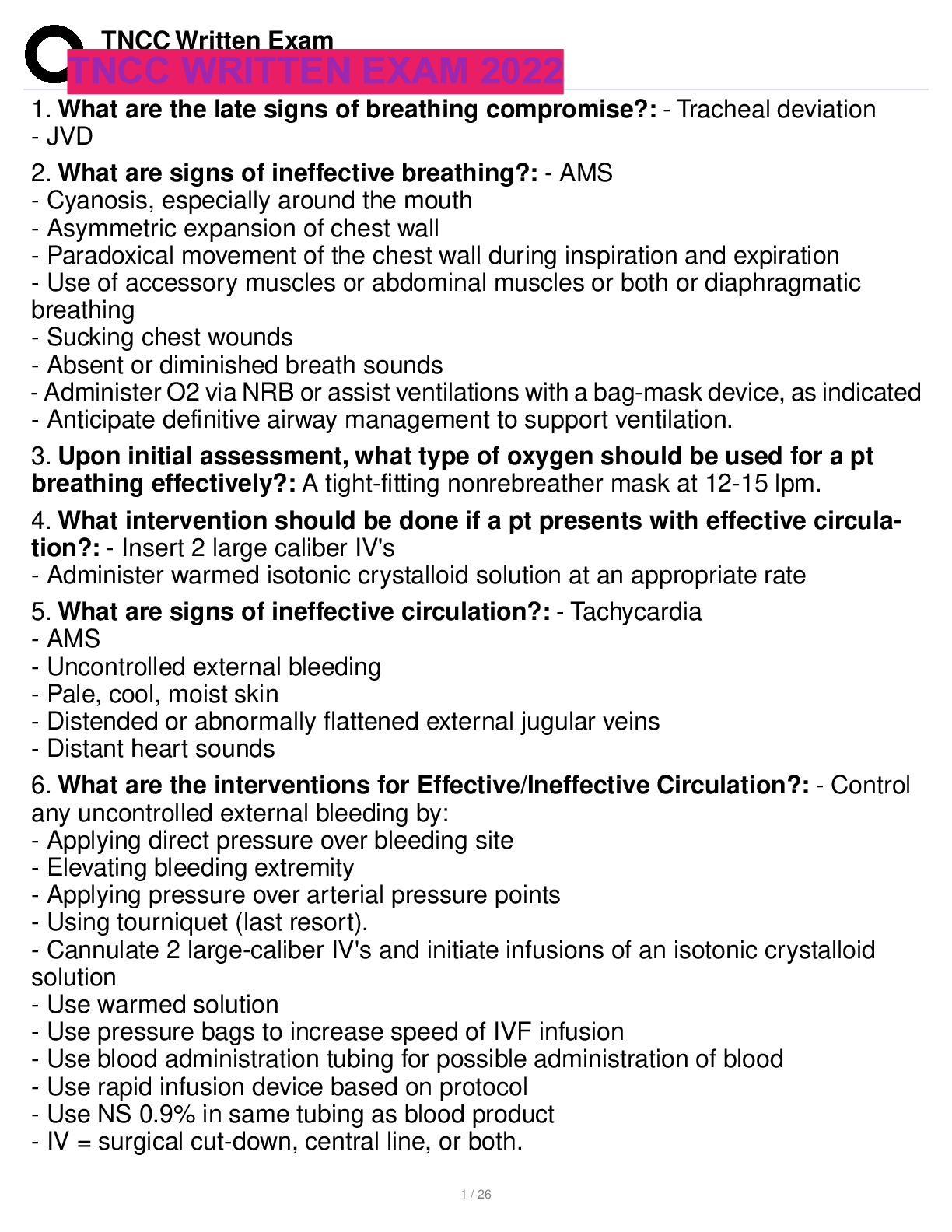

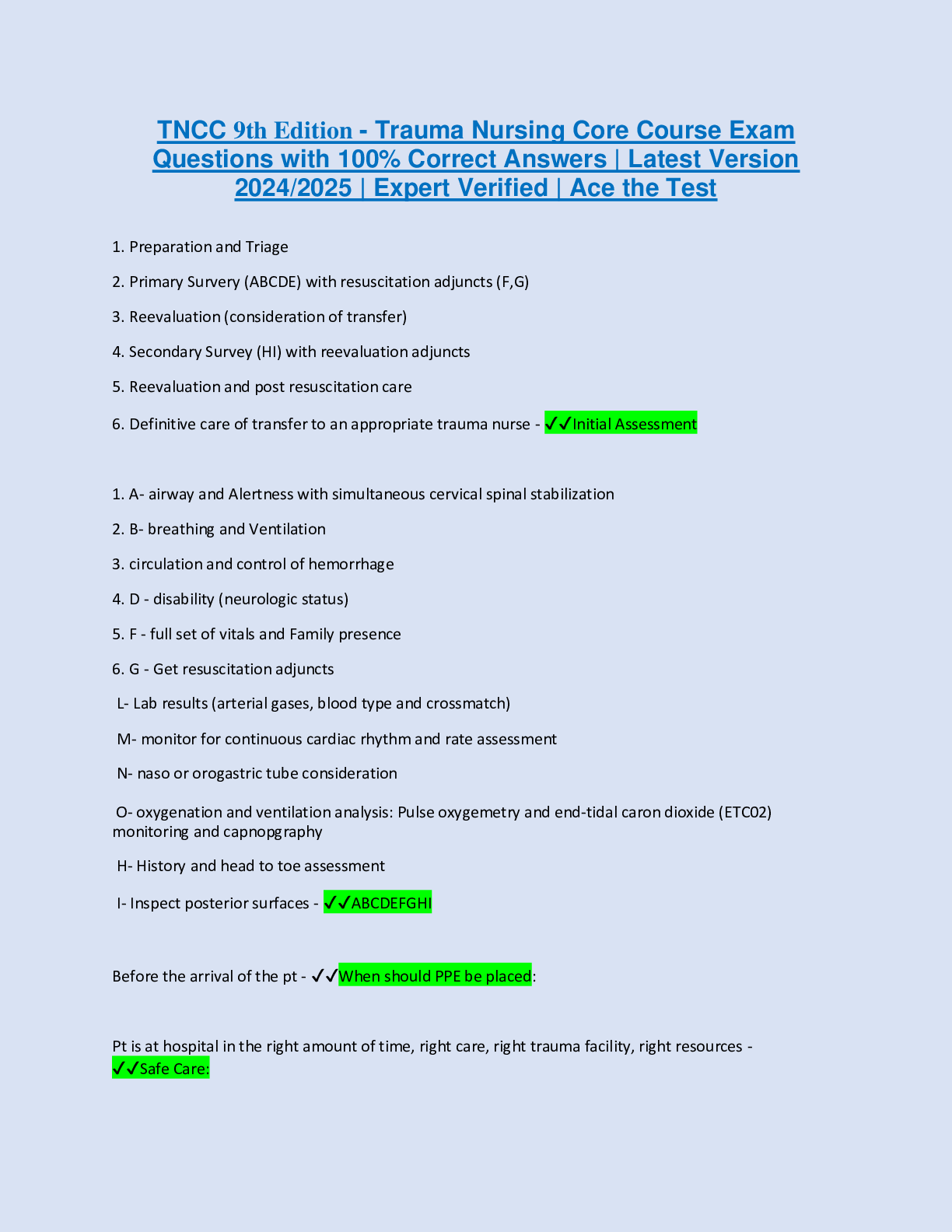








.png)

